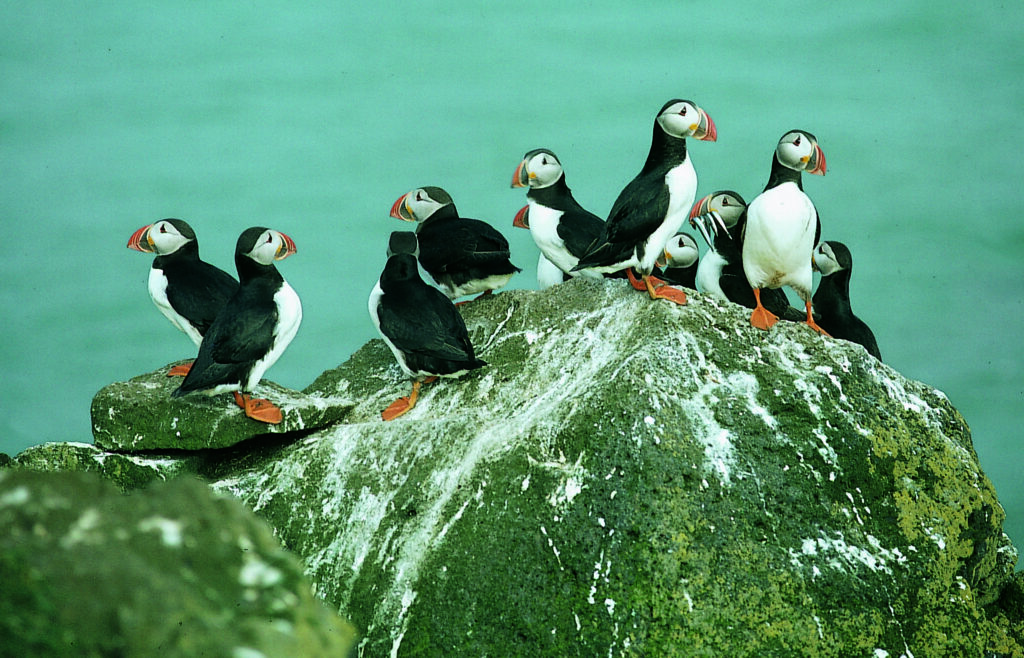A SCOTS conservation charity is asking for the public to join with its efforts to protect Scotland’s seabirds from the spread of avian flu.
The National Trust for Scotland which has over 1 million seabirds under its care, has identified five things that people can do to help protect wildlife including; puffins, gannets, guillemots and storm petrels, as this year’s breeding season gets underway.

Avian flu has had a devastating impact on seabird populations in Scotland.
Tens of thousands of seabirds died from avian flu in Scotland in 2022, with 65 dead guillemot chicks found at the St Abb’s Head National Nature Reserve in a single day and two thirds of great skuas on St Kilda wiped out by the disease last year.
Other existential threats to Scotland’s globally important seabird species include dwindling food stocks and intensifying storms, both linked to climate change, and pollution.
Ellie Owen, Senior Seabirds Officer at the National Trust for Scotland said: “There is plenty the public can do to help us conserve and protect Scotland’s seabirds, so that future generations can marvel at them too.
“We’d be hugely grateful for our supporters’ and other people’s help on five simple steps for saving our seabirds.”
The five steps suggested by the Trust cover a range of issues from helping protect seabird chicks from predators to joining campaigns or citizen science projects.
Tourists, dog owners and simply those with an internet connection and some spare time can all play a part.
Follow the ‘check, clean, close’ rule: Predators like rats or stoats can wreak havoc among eggs and chicks if they arrive on key colonies like St Kilda, Canna or other islands.
As such, the Trust is asking visitors to prioritise biosecurity (the practice of protecting places from the threats to wildlife posed by introducing new diseases or types of plants or animals that do not naturally occur there).
All the islands under the Trust’s care have emergency response plans for this, but the best way to keep chicks and eggs safe is to stop predators reaching their shores.
So, if you’re planning a boat trip, check your bag and clothes for pests; clean your boots or shoes with disinfectant; and close any food containers tight shut.
Give seabirds space: Visitors can help by maintaining a good distance from nests and birds that are feeding.
People and dogs may disturb or destroy the nests or burrows of birds that raise their young close to the shore.
Dog owners are asked to keep their dogs on a short lead or close at heel when near to any places where ground nesting birds breed or feed, or even to leave their dogs at home, especially during the breeding season (1 April to 30 September).
Sign up to a campaign: Look out for seabird (or wildlife) campaigns you could back, helping persuade politicians to support high levels of environmental protection, stewardship and biodiversity.
A particular concern of the National Trust for Scotland is the impact of fishing practices which damage our seabed and health of some of the fish stocks on which seabirds feed.
Become a citizen scientist: One way the public can help is by taking part in research and monitoring of seabirds themselves, as citizen seabird scientists.
In May-August this year, the Trust will be asking to collect images form the public of puffins carrying food to their chicks.
Trained volunteers will analyse the photos to try to spot problems emerging in what puffins at NTS sites are finding to feed their chicks.
Get involved in National Trust for Scotland seabird activities: The Trust has recently launched a Save our Seabirds fundraising campaign to help it take immediate action to protect its valuable seabird colonies before it’s too late.
Money raised will help rangers to undertake monitoring projects to understand avian flu, invest in biosecurity solutions, and support research on how the world can help seabirds survive risks like dwindling food stocks, avian flu and climate change.
You could also visit Trust properties to see amazing seabirds and seabird experiences, such as the annual ‘jumpling’ where guillemot and razorbill chicks are coaxed by their fathers to leap off a cliff edge on their first flight.
Ellie Owen continues: “The challenges facing seabirds are very grave, yet every action can make a difference.
“Back in 2005, the National Trust for Scotland eradicated the brown rat from the isle of Canna; a non-native species.
“It wreaked havoc on the closed eco-system by eating the seabirds’ eggs and chicks. But after Canna was officially rat free in 2008, seabird numbers bounced back with shag, puffin and guillemot numbers doubling in just ten years.
“By supporting our five simple actions, our fundraising campaign and other activities, anyone can help to make this type of change happen themselves.”
National Trust for Scotland’s Chief Executive, Philip Long OBE said: “A Scotland without puffins, kittiwakes or great skuas seems unthinkable.
“But the threats facing these and other seabirds are so immense that we all have to think of this as a real possibility.
“When we launched our 10-year Nature, Beauty and Heritage for Everyone strategy a year ago, we were bold in our ambitions to care for Scotland’s magnificent heritage, and that heritage includes the seabirds and other wildlife that shelter, breed and feed on our lands.
“Throughout this year our staff will be out there in our beautiful coastal places, helping nature to flourish and engaging with the public to help them understand how to take action to help save our seabirds.
“We hope as many people as possible will support them in different ways and take these five simple steps to help save Scotland’s seabirds for future generations.”